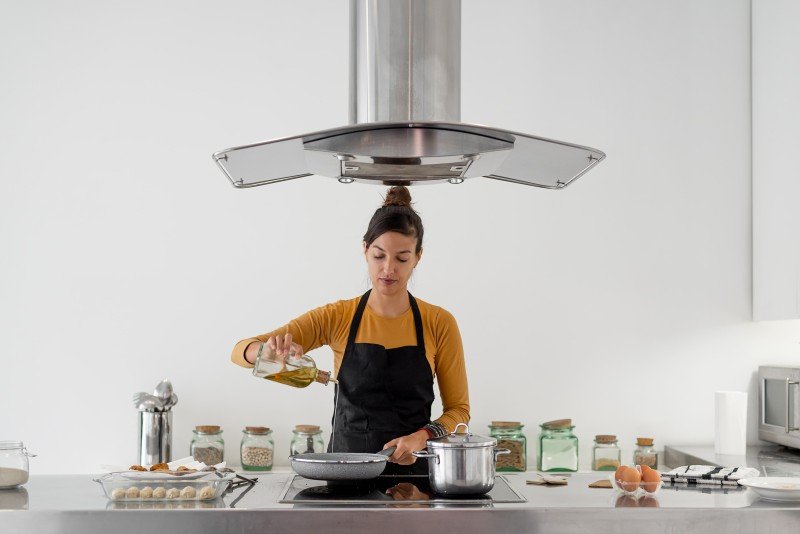Understanding Ovens and Hobs: A Comprehensive Guide
When it pertains to cooking appliances, ovens and hobs are among the most necessary tools discovered in contemporary kitchens. They play critical functions in meal preparation, transforming raw active ingredients into scrumptious dishes. Comprehending the differences between numerous kinds of ovens and hobs and how to select the right one can make a significant distinction in cooking effectiveness and food quality.
This post checks out ovens and hobs in information, providing insights into their types, features, advantages, and typical FAQs. Whether Ovens Sales are a skilled chef or a beginner cook, this info will assist you make informed decisions for your culinary requirements.
Types of Ovens
Ovens can be found in a number of types, each designed for specific cooking approaches and styles. Here is a comprehensive take a look at the most common types of ovens:
| Type of Oven | Description | Best For |
|---|---|---|
| Traditional Oven | Utilizes heating components situated at the top and bottom for even cooking. | Baking, roasting, and basic cooking |
| Stove | Functions a fan that circulates hot air for quick and even cooking. | Baking pastries and cookies, roasting meats |
| Steam Oven | Utilizes steam to cook food, preserving moisture and nutrients. | Veggies and fish |
| Microwave | Quickly cooks food utilizing microwave radiation. | Reheating and quick meals |
| Wall Oven | Built straight into the wall for space-saving cooking options. | Small kitchens and modern styles |
| Ability Level | Provides several cooking modes consisting of baking, broiling, and toasting. | Flexible cooking requires |
Types of Hobs
Hobs, likewise understood as cooktops, been available in various types based upon their fuel source and design. Comprehending these options can assist in discovering the ideal suitable for your kitchen setup:
| Type of Hob | Description | Best For |
|---|---|---|
| Gas Hob | Uses gas flames for cooking, providing instant heat control. | Traditional cooking techniques |
| Electric Hob | Uses electric coils or induction components to heat pots and pans. | Even heat distribution |
| Induction Hob | Utilizes electromagnetic energy to directly heat up pots, providing fast and efficient cooking. | Energy-efficient cooking |
| Solid Plate Hob | A type of electric hob with strong plates that takes some time to warm up however keeps heat well. | Slow cooking |
| Ceramic Hob | Features a glass-ceramic surface permitting simple cleaning, with electric heating components listed below. | Visual appeal |
Factors to Consider When Choosing an Oven and Hob
Choosing the ideal oven and hob combination needs careful factor to consider of numerous aspects. Below is a list of essential elements to bear in mind:
Cooking Style
- Are you an everyday cook or a periodic baker?
- Do you prefer steaming or frying?
Kitchen Size
- What space is available in your kitchen for the appliances?
- Will you need integrated or freestanding models?
Fuel Source
- Do you have access to gas, or would you prefer electric?
- Are you interested in induction cooking innovation?
Budget
- What is your budget for acquiring an oven and hob?
- Are you thinking about a high-end model or a more budget friendly option?
Energy Efficiency
- Are you seeking to minimize your energy usage?
- Do you choose devices that include high-efficiency scores?
Advantages of Ovens and Hobs
Both ovens and hobs bring special advantages to the kitchen. Here's a summary of some benefits:
Ovens:
- Versatility: Able to manage a vast array of cooking techniques from baking to roasting and broiling.
- Constant Results: Even heat distribution supplies trustworthy cooking outcomes.
- Big Capacity: Ideal for big meals and batch cooking.
Hobs:
- Control: Gas hobs provide instantaneous heat modifications, helpful for precise cooking.
- Efficiency: Induction hobs are known for their quicker heat-up times and energy efficiency.
- Independent Cooking: Multiple hobs enable for cooking a number of meals concurrently.
Choosing the ideal ovens and hobs is crucial for anybody seeking to boost their cooking abilities and kitchen performance. By understanding the different types of each appliance, together with their advantages and features, consumers can make informed choices that cater to their culinary practices and choices.
As cooking areas progress, so do the innovations surrounding cooking devices. Buying the best combination of an oven and hob can result in better cooking experiences, greater food quality, and even pleasurable time invested in the kitchen.
Often Asked Questions (FAQs)
What is the difference between convection and traditional ovens?
- A convection oven utilizes a fan to distribute air for even cooking, while a conventional oven relies only on the top and bottom heating components.
How do induction hobs work?
- Induction hobs use electro-magnetic fields to directly heat up pots and pans made of magnetic materials, resulting in faster cooking times and more energy effectiveness.
Are gas hobs much safer than electric hobs?
- Safety depends upon use and installation. Gas hobs need correct ventilation and can present a fire threat, while electric hobs may present risks of burns due to their hot surfaces.
Can I bake in a steam oven?
- Yes, a steam oven can be used for baking, typically leading to moister and fluffier baked items, especially breads and pastries.
What should I search for in a built-in oven?
- Try to find features like capability, cooking modes, energy performance ratings, and ease of cleansing.
By considering the info and guides supplied in this short article, readers can quickly browse the world of ovens and hobs, ensuring that they choose the best devices to match their cooking needs.

